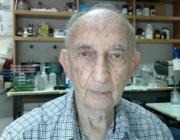Abstract:
Host defense peptides are immediate responders of the innate immunity that express antimicrobial, immunoregulatory, and wound-healing activities. Neutrophils are a major source for oral host defense peptides, and phagocytosis by neutrophils is a major mechanism for bacterial clearance in the gingival tissue. Dysfunction of or reduction in the numbers of neutrophils or deficiency in the LL-37 host defense peptide was each previously linked with proliferation of oral Aggregatibacter actinomycetemcomitans which resulted in an aggressive periodontal disease. Surprisingly, A. actinomycetemcomitans shows resistance to high concentrations of LL-37. In this study, we demonstrated that submicrocidal concentrations of LL-37 inhibit biofilm formation by A. actinomycetemcomitans and act as opsonins and agglutinins that greatly enhance its clearance by neutrophils and macrophages. Improved uptake of A. actinomycetemcomitans by neutrophils was mediated by their opsonization with LL-37. Enhanced phagocytosis and killing of A. actinomycetemcomitans by murine macrophage-like RAW 264.7 cells were dependent on their preagglutination by LL-37. Although A. actinomycetemcomitans is resistant to the bactericidal effect of LL-37, our results offer a rationale for the epidemiological association between LL-37 deficiency and the expansion of oral A. actinomycetemcomitans and indicate a possible therapeutic use of cationic peptides for host defense
